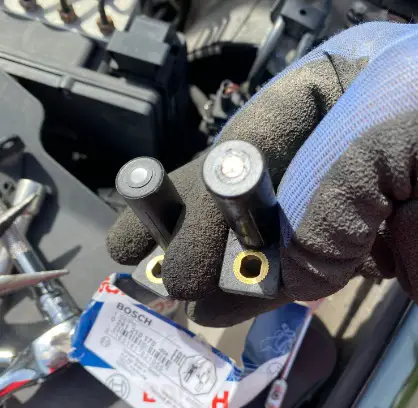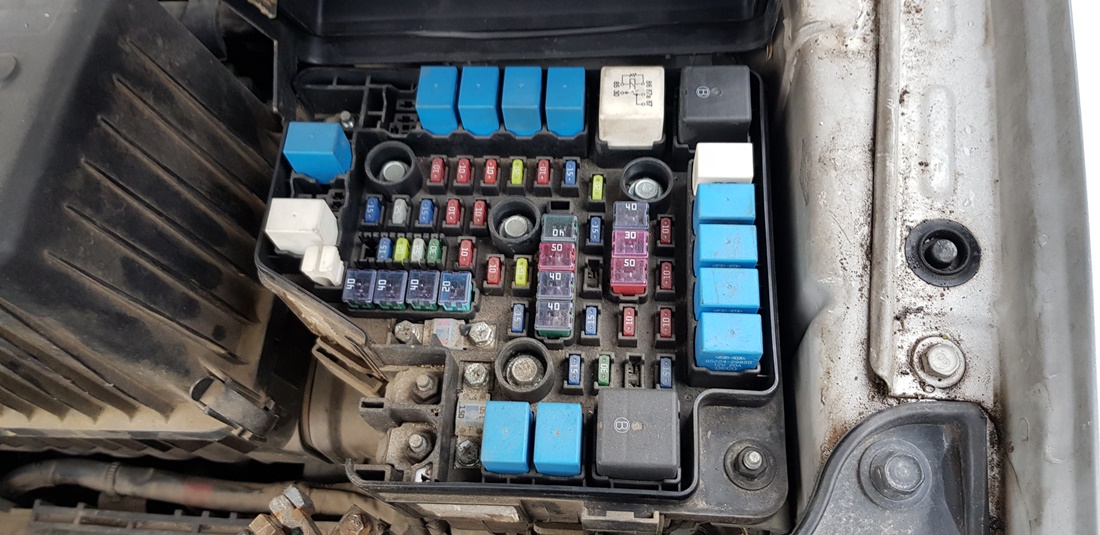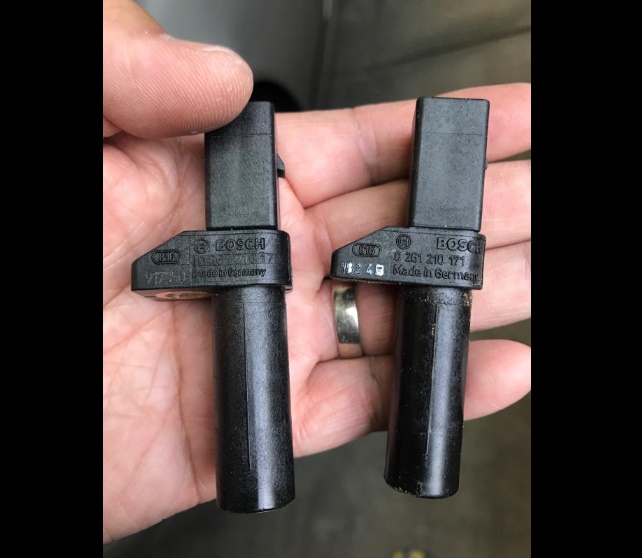Many car owners are wondering if white smoke from the tailpipe always means a blown head gasket. Do not confuse the white smoke that you usually see when you first start the car in the morning.
That is condensate and that’s totally normal. We are talking about excessive white smoke from the tailpipe.
I reached out to a couple of local mechanics to see what their thoughts are on this matter. What I found out was very interesting…
- Key Takeaway
- What Is a Blown Head Gasket?
- Does White Smoke Always Means a Blown Head Gasket?
- Where Is The Head Gasket Located?
- Can You Test For a Blown Head Gasket?
- Signs of a Blown Head Gasket
- What Causes a Blown Head Gasket
- Can You Have a Blown Head Gasket Without Overheating?
- Can You Have a Blown Head Gasket Without Losing Coolant?
- FAQs
- Q: What are the symptoms of a blown head gasket?
- Q: Can a blown head gasket cause overheating?
- Q: How can I confirm if I have a blown head gasket?
- Q: Can a blown head gasket be repaired?
- Q: What causes a blown head gasket?
- Q: How much does it cost to replace a blown head gasket?
- Q: Can I still drive my car with a blown head gasket?
- Q: How can I prevent a blown head gasket?
- In Conclusion
Key Takeaway
- White smoke from the tailpipe means that the head gasket is blown and is allowing coolant to get inside the combustion chamber.
- You can test for a blown head gasket by using a combustion leak tester.
- The head gasket can be blown without the engine overheating. This usually happens if you drive the vehicle short distances.
What Is a Blown Head Gasket?
A blown head gasket is a mechanical failure that occurs in the engine of a vehicle.
The head gasket is a critical component that seals the engine’s combustion chamber and prevents coolant or oil from leaking into the cylinders. It is located between the engine block and cylinder head.
When it “blows” or fails, it can no longer effectively seal these areas, leading to leaks and potentially severe engine damage.
Symptoms can include overheating, white smoke from the exhaust, milky oil, and noticeable loss of coolant without visible leaks.
This condition can cause significant performance issues and if left untreated, can result in costly repairs or even engine replacement.
Does White Smoke Always Means a Blown Head Gasket?

White smoke from the tailpipe can be a sign of a blown head gasket because it often indicates that coolant is leaking into the combustion chamber and being burned off as steam.
In normal conditions, the coolant travels through specially designed passages around the cylinder head and cylinder block. With the help of the cylinder head gasket, the coolant only circulates around the combustion chamber and never goes in it.
However, if the head gasket is blown, it allows for the coolant to escape and leak into the combustion chamber and then get burned off with the fuel mixture. This will result in white smoke from the tailpipe.
Depending on how badly the head gasket is blown, you might see a little bit of constant white smoke from the tailpipe or excessive white smoke.
In some rare cases, when an engine is overheated badly, the cylinder head can develop a crack and allow for coolant to leak into the combustion chamber from there and get burned off with the fuel mixture. However, in most cases, it is a blown head gasket that causes the coolant leak.
So, if your vehicle is losing coolant, but there are no obvious signs of leaking and you see excessive white smoke exiting the tailpipe, make sure to check the head gasket. Instead of dismantling your engine to visually inspect the head gasket, there is another way.
Where Is The Head Gasket Located?
The head gasket is located within the engine of a vehicle, specifically between the engine block and the cylinder head.
Its primary role is to ensure a strong seal between these two major engine components. The engine block houses the pistons and cylinders, while the cylinder head contains the valves and spark plugs.
The head gasket is critically positioned here to prevent coolant or engine oil from leaking into the cylinders where combustion takes place says Repair Smith.
Can You Test For a Blown Head Gasket?

Yes, you can test for a blown head gasket by performing various tests such as checking for the presence of combustion gases, conducting a pressure test of the cooling system, examining the coolant for traces of carbon dioxide, or inspecting the oil filler cap and dipstick for signs of contamination.
I got this combustion leak tester from amazon.com. It is pretty simple to use.
- Check the oil: If your head gasket is blown, coolant may leak into the oil. This causes the oil to turn milky white, which is a clear sign of a blown head gasket.
- Examine the coolant: Look inside the coolant overflow tank. If you see oil, this could mean that your head gasket has failed.
- Perform a compression test: This involves removing a spark plug and checking the compression in the cylinder with a compression gauge. If the compression is significantly lower in one or more cylinders, you may have a blown head gasket.
- Use a chemical block test kit: This involves adding a liquid to the cooling system that changes color when exposed to combustion gases. If the liquid changes color, your head gasket is likely blown.
- Overheating engine: If your vehicle is constantly overheating, it could be a symptom of a blown head gasket.
- White smoke from the exhaust: When coolant enters the combustion chamber due to a blown head gasket, it gets burned along with the fuel. This results in a thick white smoke emitting from the exhaust pipe.
Signs of a Blown Head Gasket
- Overheating Engine
- White Smoke from Exhaust
- Bubbling in the Radiator or Coolant Reservoir
- Milky White Coloration in the Oil
- Significant Loss of Coolant with No Visible Leaks
- Poor Engine Performance
- Coolant or Oil from Engine on the Ground
What Causes a Blown Head Gasket
- Overheating
- Pre-ignition and Detonation
- Abrupt Temperature Changes
- High Mileage and Age
- Incorrect Installation
- Leaking Cooling System
- Excessively Lean Air/Fuel Mixture
- Carbon Deposits in the Chamber
- Loss of Coolant
Can You Have a Blown Head Gasket Without Overheating?

Yes, it is possible to have a blown head gasket without overheating, as other factors like damage to the gasket or improper engine cooling can also cause a head gasket to blow.
This actually happened to my 2007 Hyundai Santa Fe. It was December and it was pretty cold outside. I only used this car to go to work and back which was around 3 miles each way.
So, the engine didn’t have the chance to reach the optimal working temperature and then overheat. Instead, it kept burning all of the coolants little by little, until May. It got pretty hot one day in May and while I was driving to work, the engine just overheat.
What happened was because I was driving the vehicle for only short trips, it lost all of the coolant over time and it didn’t overheat because it was cold outside. On the very first hot day, the engine reached the working temperature sooner and it overheated because it had zero coolant in it.
However, if you drive your vehicle for longer trips and your head gasket is blown, regardless of the temperature outside, the engine will overheat once it loses all of the coolant.
Depending on how bad the head gasket is blown, it can take anywhere from a thirty-minute drive to a three-hour drive for all of the coolant to leak. If you notice on time that the temperature needle is going up, you can prevent your engine from overheating and possibly thousands in repairs.
Can You Have a Blown Head Gasket Without Losing Coolant?

Yes, it is possible to have a blown head gasket without losing coolant, as the damage may allow oil and coolant to leak into other areas of the engine without necessarily leading to noticeable coolant loss.
When the head gasket is damaged, it no longer maintains pressure within their dedicated passageways, which can lead to oil and coolant leaking into areas of the engine where they don’t belong.
This leakage might not always result in noticeable coolant loss. Moreover, an engine can overheat due to reasons other than a coolant leak. These are clogged radiator or faulty fan, which can also lead to head gasket failure.
Therefore, a blown head gasket can occur without any evident loss of coolant.
FAQs
Q: What are the symptoms of a blown head gasket?
A: Common symptoms include white smoke from the exhaust, coolant loss, overheating, and engine misfires.
Q: Can a blown head gasket cause overheating?
A: Yes, a blown head gasket can lead to overheating as it disrupts the proper functioning of the engine’s cooling system.
Q: How can I confirm if I have a blown head gasket?
A: A professional mechanic can perform a series of tests, such as a compression test or a coolant pressure test, to determine if your head gasket is blown.
Q: Can a blown head gasket be repaired?
A: In most cases, a blown head gasket will need to be replaced. The repair process can be complex and often not cost-effective.
Q: What causes a blown head gasket?
A: A blown head gasket can be caused by factors such as engine overheating, improper installation or torquing of the head bolts, or age and wear of the gasket itself.
Q: How much does it cost to replace a blown head gasket?
A: The cost of replacing a blown head gasket varies depending on the make and model of your vehicle, but it can range from a few hundred to several thousand dollars.
Q: Can I still drive my car with a blown head gasket?
A: It is not recommended to drive your car with a blown head gasket. It can cause further damage to the engine and lead to costly repairs.
Q: How can I prevent a blown head gasket?
A: Regular maintenance and proper care of your vehicle can help prevent a blown head gasket. This includes monitoring coolant levels, addressing any overheating issues promptly, and following the manufacturer’s recommended maintenance schedule.
In Conclusion
A blown head gasket is a mechanical failure that occurs in the engine of a vehicle.
The head gasket is a critical component that seals the engine’s combustion chamber and prevents coolant or oil from leaking into the cylinders.




